Schumannianthus Gagnep.
common donax, bemban, bamban ai, bamban batu
Marantaceae
Southeast Asia
Schumannianthus dichotomus (Roxb.) Gagnep.
information not available
information not available
amphibiousamphibious:
(adj) of a plant able to live on land or in water
to aquatic herb, often forming thickets
Small to large shrub. Rhizomes black. Stems erect, round, ± woody, base and primary branches with 1-3 leafless sheaths, branching dichotomous. Leaves al ternateternate:
(adj) in threes
; petiolepetiole:
(n) the stalk of a leaf
 short-hairy, ligulateligulate:
short-hairy, ligulateligulate:
(adj) possessing or with a ligule
; bladeblade:
(n) (syn. lamina) the flat, expanded part of a leaf, frond, or petal (excluding, e.g., the petiole)
 ovateovate:
ovateovate:
(adj) egg-shaped in outline; generally with the broad end at or near the base
 to ellipticelliptical:
to ellipticelliptical:
(adj) in the form of an ellipse (oval)
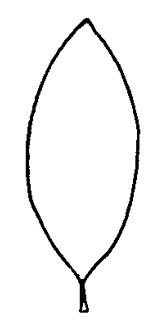 , glabrousglabrous:
, glabrousglabrous:
(adj) without hairs or scales
; apexapex:
(n) the point farthest from the point of attachment; the tip (often pointed)
acute to acuminateacuminate:
(adj) tapering gradually to a point and forming more or less concave sides
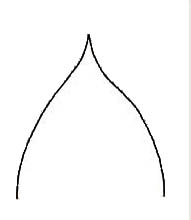 ; base rounded; venationvenation:
; base rounded; venationvenation:
(n) the arrangement of veins in a leaf
pinnate. Inflorescenceinflorescence:
(n) the arrangement of flowers on the floral axis
 a terminalterminal:
a terminalterminal:
(adj) at the apex
, branched paniclepanicle:
(n) an indeterminate, branched (often much-branched) inflorescence; the ultimate units may be of a different inflorescence type
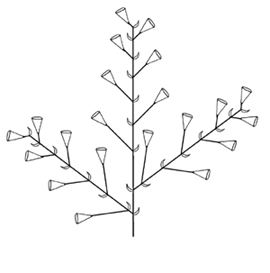 borne on a pedunclepeduncle:
borne on a pedunclepeduncle:
(n) the stalk of a flower cluster or inflorescence
dilated at the top. Flowers in pairs: one terminalterminal:
(adj) at the apex
, one in the upper third, both pedicellatepedicellate:
(adj) borne on a pedicel
; bracts lanceolatelanceolate:
(adj) lance-shaped; widest point below the middle, tapering to the apex
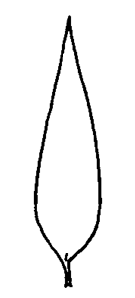 , keeledkeeled:
, keeledkeeled:
(adj) having a keel; sharply creased
, apexapex:
(n) the point farthest from the point of attachment; the tip (often pointed)
acute, papery, deciduousdeciduous:
(adj) shedding of parts at the end of their growing period, as with leaves; those trees or shrubs that drop their leaves at the end of the season
; bracteoles small, fleshy, glandular; flowers white except for yellow on staminodes; sepals 3, lanceolatelanceolate:
(adj) lance-shaped; widest point below the middle, tapering to the apex
 to triangular, apexapex:
to triangular, apexapex:
(n) the point farthest from the point of attachment; the tip (often pointed)
acuminateacuminate:
(adj) tapering gradually to a point and forming more or less concave sides
 ; corollacorolla:
; corollacorolla:
(n) the inner whorl(s) of the perianth; all the petals of a flower
 basally tubulartubular:
basally tubulartubular:
(adj) (of a corolla, perianth, calyx tube or other structure) (1) tube-shaped; cylindrical: narrow and elongate with more or less straight sides; (2) having segments fused into a tube (of any shape)
, lobes 3, oblongoblong:
(adj) two to four times longer than wide, with +/- parallel sides
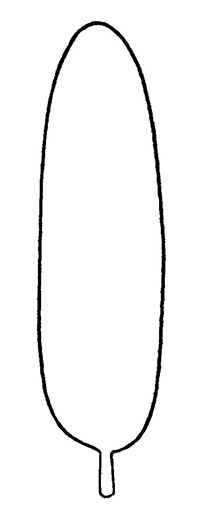 to lanceolatelanceolate:
to lanceolatelanceolate:
(adj) lance-shaped; widest point below the middle, tapering to the apex
 , spreading; staminodestaminode:
, spreading; staminodestaminode:
(n) a sterile stamen, not producing pollen; may be inconspicuous, petaloid, or showy
tube inconspicuous, outer staminodes 2, obovateobovate:
(adj) ovate, with the narrow end at the base
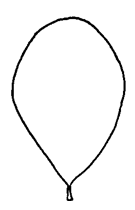 , petaloidpetaloid:
, petaloidpetaloid:
(adj) resembling a petal in appearance
, callous staminodestaminode:
(n) a sterile stamen, not producing pollen; may be inconspicuous, petaloid, or showy
obovate, vaguely lobedlobed:
(adj) divided into (usually rounded) segments
, hooded staminodestaminode:
(n) a sterile stamen, not producing pollen; may be inconspicuous, petaloid, or showy
shorter, narrower, with single laterallateral:
(adj) on or pertaining to the side of an organ or structure
lobe, suborbicular, fertilefertile:
(adj) producing viable seed, spores, or pollen; capable of reproducing
stamenstamen:
(n) the male reproductive organ in a flower, consisting of a pollen-bearing anther and a filament
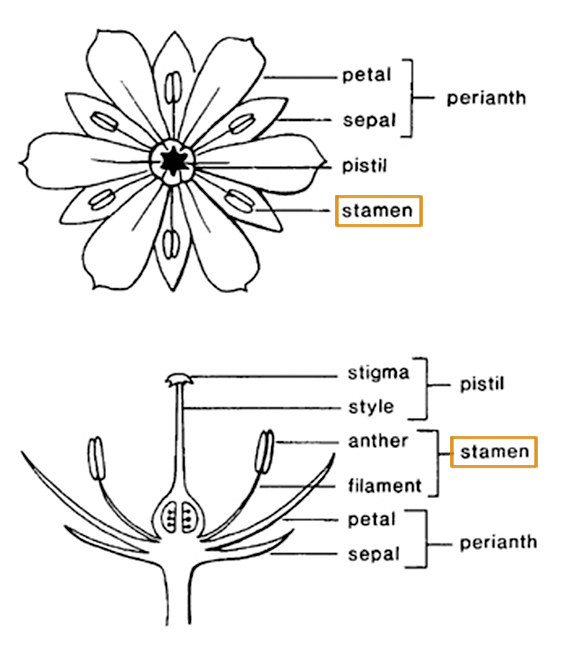 with petaloidpetaloid:
with petaloidpetaloid:
(adj) resembling a petal in appearance
appendageappendage:
(n) a projecting part of a structure
; stylestyle:
(n) in a flower, the narrow and elongated part of the pistil between the stigma and the ovary
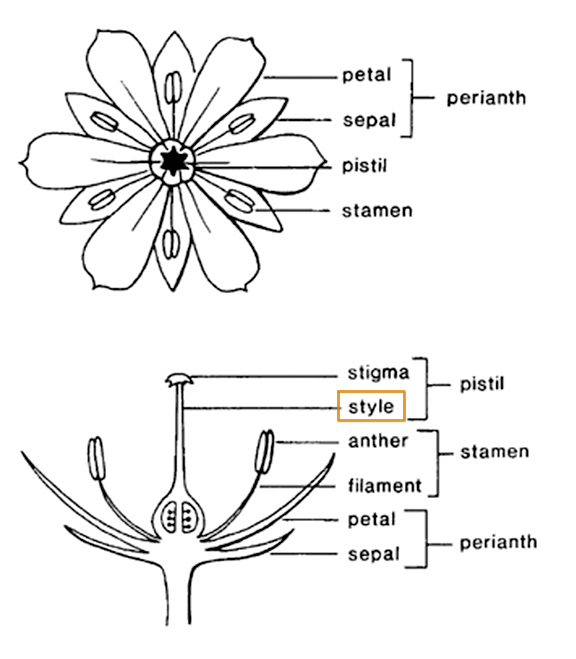 curved, with stigmatic cavity.
curved, with stigmatic cavity.
in swamps and along rivers
This genus comprises two species: Schumannianthus dichotomus and S. monophyllus Suksathan, Borchs. & A.D. Poulsen. These are harvested from their natural habitat to create patidoi mats. The flowers are distinctive.